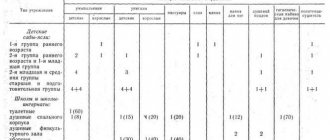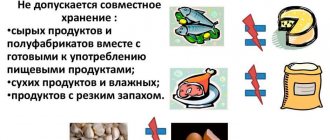School requirements
The first and main requirement is that you should always have replacement shoes with you! Autumn, winter and spring! I remember that before we weren’t even allowed into school without a shift; it was checked by those on duty at the entrance. If you forgot, go back, get a shift, and then come back. So the forgetful people ran back and forth.
Well, today the school reports what replacement shoes should be like in its local regulatory act called “Regulations on the uniform school uniform and appearance of students.” Or the school may issue an order for replacement shoes. For example, our school policy states that sports shoes, evening shoes, high-heeled shoes and shoes of very bright colors are not allowed.
Often the school insists that the shift have a white or light-colored sole. Because the black sole leaves marks in the form of black lines on the floor coverings.
Color coding system for cleaning equipment
Color coding is necessary to accurately assign cleaning equipment to specific areas to prevent cross-contamination and bacterial contamination during professional cleaning.
At the time of writing (2014) in Russia there were no strict standards indicating what color should be used in a particular zone. SanPiN 2.1.3.2630-10 (clause 11.5) states that “Cleaning equipment (trolleys, mops, containers, rags, mops) must be clearly marked or color-coded, taking into account the functional purpose of the premises and types of cleaning work, and be stored in a designated room.
A color coding scheme is placed in the inventory storage area.” Businesses are allowed to develop their own color coding system.
As a rule, four colors are generally accepted in the system: red, yellow, green and blue. → Vileda Professional uses color coding on buckets, trash cans, mops, telescopic handles, sponges, gloves, napkins and other cleaning materials to separate cleaning zones. Vileda Professional cleaning equipment is equipped with a simple and reliable 4-color Quattro color coding system, which uses the colors familiar to all cleaning companies: blue, red, yellow and green.
Vileda buckets are equipped with colored clips, mop handles have special colored clips, and the cleaning attachments have labels in four colors (three of which are cut off, leaving one of the desired color).
Red color is usually used in high-risk areas: for cleaning bathrooms, bathroom floors, etc. In professional kitchens, the color red may indicate that wiping material is used for cleaning the meat shop, and equipment is used for working with raw meat. In medical institutions (health care facilities, outpatient clinics, clinics, dispensaries, hospitals, hospitals, clinics, etc.), red-coded equipment is intended for cleaning sanitary rooms, rooms for storing dirty linen, and medical waste.
Why do you need replacement shoes at school?
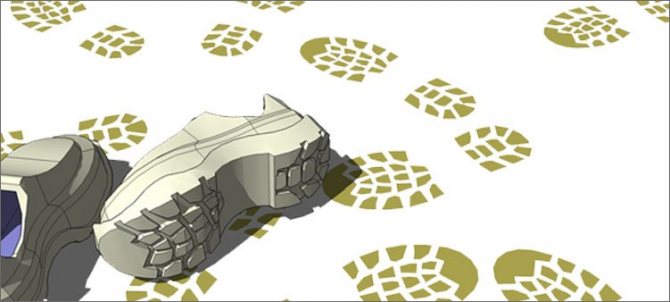
- Firstly, in order to keep it clean, so that dirt from the street does not drag into the premises.
- Secondly, being in heavy boots, boots or felt boots all day is very difficult and unpleasant.
So a change is definitely needed! Just which one? After all, shifts are different. And while one pair has a beneficial effect on the child’s health, the other, on the contrary, will harm him.
Cleaning equipment: what equipment is subject to marking
Sanitary rules introduce strict delineations of equipment for cleaning; each item of equipment must have its own marking or color mark, indicating its functional purpose and the type of work performed.
Moreover, working solutions of disinfectants must also be separated. It is necessary to have separate containers with working solutions of disinfectants used to treat various objects.
In other words, disinfecting cleaning equipment in containers for surface disinfection of equipment and furniture threatens to violate sanitary and epidemiological standards. requires cleaning equipment to be marked with a color mark or marking that expresses the type of cleaning work and the functional purpose of the room. For example, wiping the walls in the ward and washing the floors in the resident's room express both different types of work and different functional rooms in which this cleaning is carried out.
If cleaning is carried out in one room, then the equipment for the walls and floor should be separate. Cleaning equipment for the floor and walls should be separate, clearly marked, and used separately for offices, corridors, and bathrooms. All mops, carts, containers, and even rags must be marked with a marker or have a color mark that identifies their purpose and type of work. A color coding scheme is placed in the equipment storage area: Cleaning equipment (trolleys, mops, containers, rags, mops) must be clearly marked or color coded taking into account the functional purpose of the premises and types of cleaning work and be stored in a designated room. A color coding scheme is placed in the inventory storage area. Moreover, the linen equipment used for collecting dirty linen and transporting it to the pantry must also be marked: Collection of dirty linen is carried out in closed containers (oilcloth or plastic bags, specially equipped and marked linen trolleys or other similar devices) and transferred to the central storeroom
Cleaning equipment for cleaning medical institutions, schools, public catering: markings and requirements
If you want your office to be clean, then you need to clean it regularly.
And this cannot be done efficiently without cleaning equipment. This includes everything that we usually use for cleaning indoors and outdoors. The cleaning equipment used by professional cleaning services is very different from what we use at home.
A large selection of cleaning equipment is presented on the uralservicektb website. ru/catalog/uborochnyy-inventar/.
Here you can find literally everything, from ordinary mops to more complex devices for cleaning windows and ceilings, as well as bathroom accessories. Equipment used for cleaning in public institutions is subject to mandatory labeling. Sanitary services require the following markings:
- For cleaning toilets, other rooms and washing benches, you need to use different buckets. Each of them is marked with oil paint. The marking should be as follows: UB, for floors or for sofas; Brushes and mops are marked similarly. The corresponding marks are applied to the handle using indelible paint; burlap used for cleaning floors is also marked. A red flap is sewn onto the corner of a rag for cleaning the toilet, and burlap intended for washing floors in other rooms is marked with a green flap.
Flannel used for wiping benches and benches is not marked.
No special designation is applied to industrial vacuum cleaners and other equipment. In addition, there is color coding of inventory. This is an additional measure that allows us to judge how well the enterprise complies with sanitary standards and hygiene requirements.
Typically, the area to be cleaned is divided into five zones.
Each of these zones corresponds to equipment of a certain color: Equipment intended for cleaning in places where the bacterial threat is quite high, that is, in toilets, is marked red.
Green color is used to mark equipment used in kitchens and other rooms intended for storing food and eating.
The influence of shoes on the health of schoolchildren
How can these shoes affect a child's health? It turns out it still can!
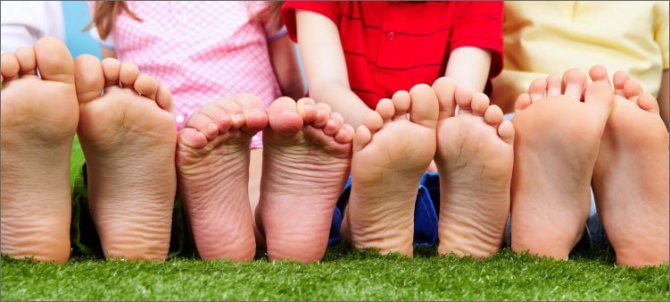
The foot has a unique structure. It has a spring function. If everything is in order with the foot, then it reduces the force of impacts and jolts during jumping, running, and walking. Incorrectly selected shoes can cause flat feet in children.
In this case, the foot ceases to perform its spring function. And a chain reaction begins. The gait changes. Blood circulation in the legs is impaired. Posture worsens, even to the point of scoliosis. The spine is deformed. Intervertebral joints are injured. Even microtraumas to the brain from constant hard shocks when walking are possible.
How does the child feel?
- Pain in the feet and calf muscles.
- Backache.
- Headache.
- Increased fatigue.
And this is not a complete list of problems.
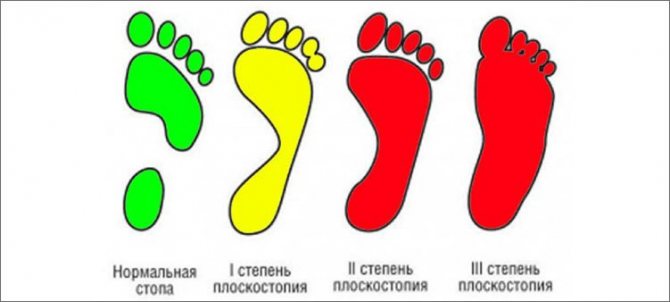
There is good news! Flat feet, fortunately, can be treated if treated in time. But you and I know that it is easier to prevent a disease than to treat it. Therefore, it is very important to take a responsible approach to choosing replacement shoes for school. After all, the child spends a huge amount of time in it.
Types of cleaning
At the moment, there are 3 main types of cleaning:
Wet look
The main ingredient without which it is impossible to carry out this type of cleaning is water. Typically some amount is mixed with detergent and used to remove stains. Necessary equipment includes rags, mops, spray bottles and important wipes.
Dry type
The method does not guarantee perfect cleanliness, but it does an excellent job of removing dust and dry, fragile stains. Most cleaning is done by hand. To carry it out, you need pipi-dastras, rags, brushes, sweeping items or vacuum cleaners.
Mixed cleaning
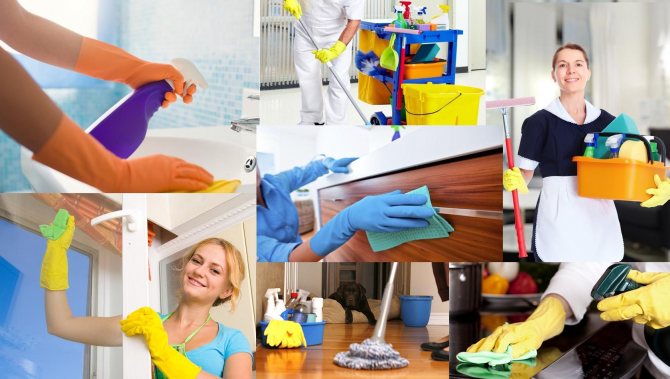
Mixed cleaning
This type of dirt removal includes both dry and wet types of cleaning. The implementation uses water, detergents suitable for specific surfaces, as well as substances that can disinfect and kill germs.
In addition, it is customary to divide cleaning into several classifications according to the frequency of their implementation. Thus, there are also 3 types.
- Daily or routine cleaning of the premises;
- Weekly removal of dirt;
- Spring-cleaning.
Important! According to the method of implementation, cleaning can be divided into manual and mechanical.
- The first type involves removing stains using hand brooms, brushes, mops, rags and dustpans.
- And the second type allows the use of automatic devices that greatly simplify the process. The equipment includes vacuum cleaners that can be equipped with a dust collector or an aqua filter. In addition, there are washing devices that actively perform wet cleaning of contaminants. The range of mechanical cleaning items may include steam generators and sweeping and washing machines.
Selection rules
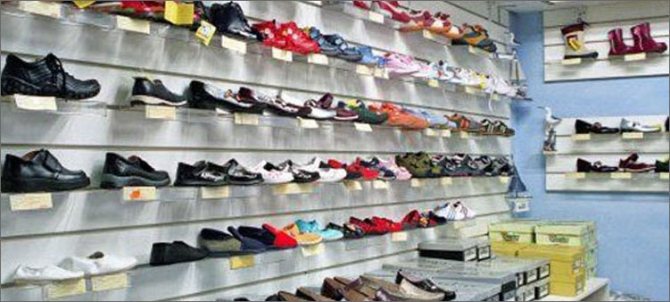
So how do you choose the right shoes? Let's start with what we won't consider as a change:
- Czech shoes and sneakers have too soft soles that do not absorb the impact of the heel on the floor at all.
- Slippers, flip flops, clogs and any shoes without backs. She has a habit of flying off at the most inopportune moments. For example, when moving quickly up the stairs in a crowd of children rushing in different directions. This may result in a fall and injury.
- Sneakers. They are only suitable for physical education lessons and have nothing to do with the business style of clothing adopted in Russian schools.
- Sandals and sandals that are too open, in them the foot is not protected and is exposed to external influences. They can even crush your fingers.
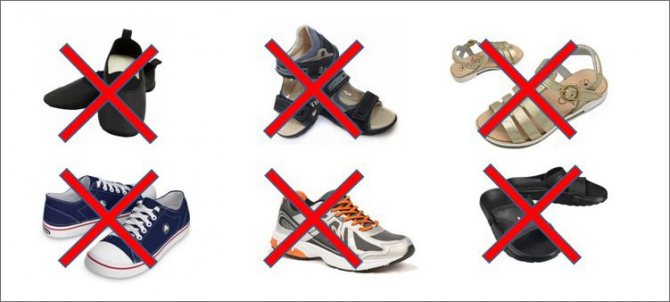
So we will choose shoes for both boys and girls. Moreover, orthopedic doctors also vote for them. Before going to the store, let's arm ourselves with the following information.
How to label cleaning equipment photo
- Manually
- similar articles:
- An old song with a fresh twist
Marking of cleaning equipment It is impossible to imagine any cleaning without cleaning tools.
In order for your cleaning to become high-quality, fast and effective, you need to acquire cleaning equipment. This is an industrial vacuum cleaner, buckets, mops, rags, brushes, flannel, burlap. In all institutions, for example, kindergartens, schools, factories, shops, and others, according to sanitary epidemiological operating rules, each cleaning component must be marked. There are many types markings and methods of applying them, let's try to figure out what is indicated and why it is needed: 1. Marking of UB buckets - found on buckets for treating toilets, applied to the outer surface of the bucket with oil paint.2. Marking of buckets for floors - must be on all buckets that are used to treat floors in service and passenger premises, applied to the outside of the bucket with oil paint. 3. Marking of buckets for sofas - is on all buckets that are used in cleaning benches, sofas, walls, as well as balustrades in passenger buildings and premises, is applied in the same way as in previous examples.4.
Marking of brushes UB - used on brushes for sweeping floors in service and other toilets. It must be applied either with oil paint or burned on the handle of the brush.5.
Sole
The sole should be moderately flexible. The soles of shoes and sneakers are extremely flexible; they can easily be bent in half.
A sole that is too hard won't work either. It prevents the foot from moving freely and causes tension in the feet and legs. In addition, shoes with too hard soles often slip off the heel.
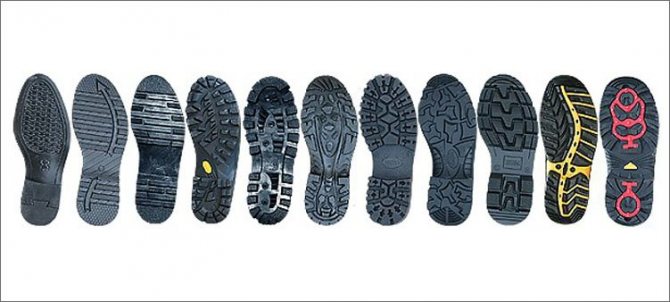
How do you know if the sole is flexible enough? You need to put the shoe on your foot and try to lift the toe without raising the heel. An elevation angle of 25 degrees indicates that everything is in order.
A sole that is too thick is dangerous because there is no good grip of the foot on a stable surface. It's easy to twist your ankle and fall. The optimal sole thickness is 7 mm.


